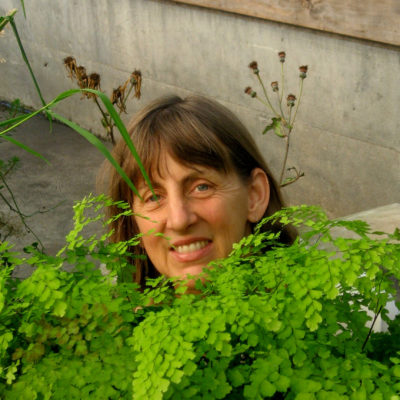In early March Berkeley Hort’s sleeping Japanese maple saplings wake up and push out their fresh spring leaves. The colors are vivid and showy, but the show is a limited engagement; it’s best to stop by before May to view the trees in their liveliest shades of gold, green, orange, pink, burgundy and scarlet.
Though they do come alive with a bang, the forest of young trees is one of the most peaceful areas of the nursery. Wading among them might not be as life-changing as full-on ‘forest bathing’, but it still can be refreshing to focus for a few minutes on the trees’ diverse leaf shapes, textures and colors, and even to ponder their varietal names: ‘Moonrise, ‘Harp Strings’, ‘Wet Heron’, ‘Glowing Embers’, etc.
Most of Berkeley Hort.’s maple forest is comprised of cultivars of several Japanese species: Acer palmatum, A. shirasawanum and A. japonicum. A list of these varietals is available at the nursery’s sales counter.
Whether planted in containers or in the ground, Japanese Maples generally need moist, well-drained, humus-y soil, and shelter from strong winds. Most grow very well in light shade or full sun with protection during the hottest hours; the laceleaf, threadleaf and variegated forms prefer dappled afternoon shade.



